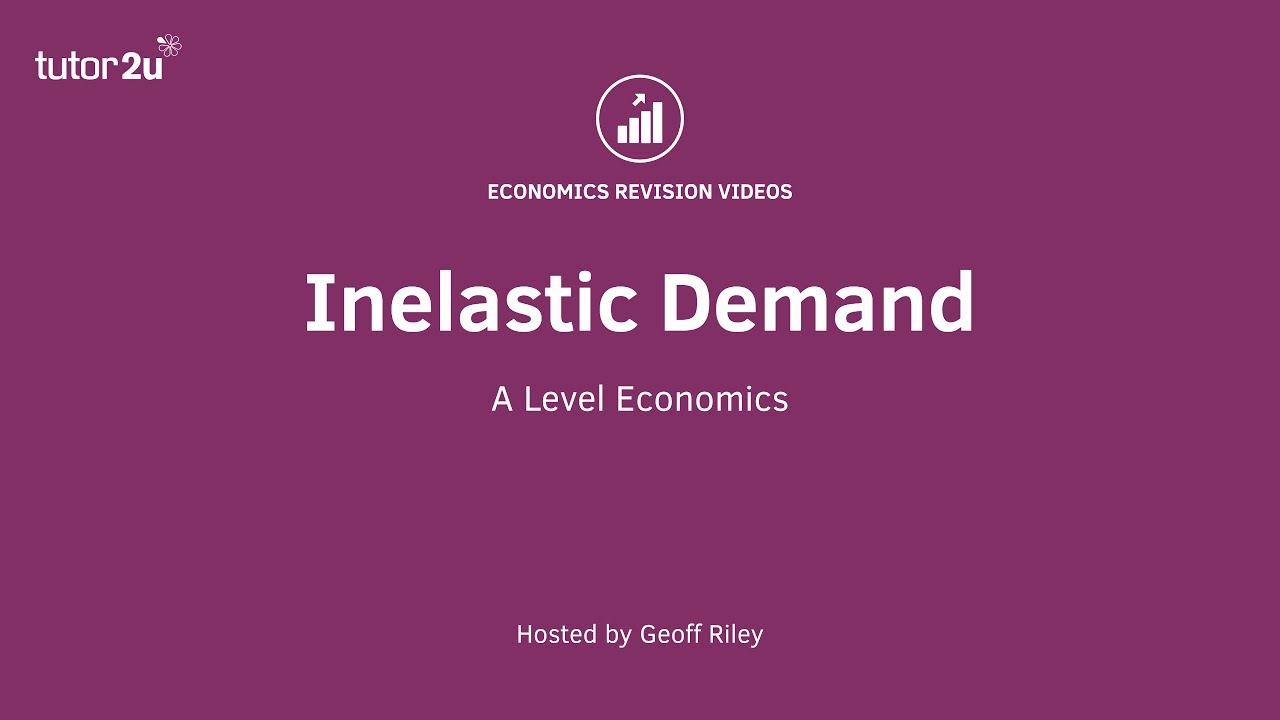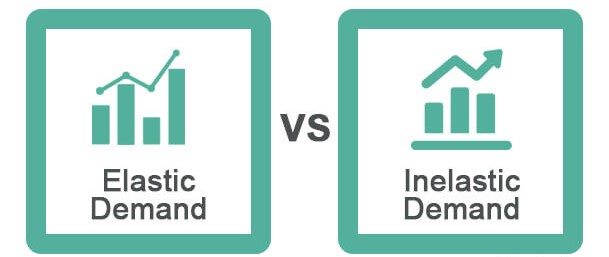When a product or service's demand changes significantly when the price changes, it is referred to as having elastic demand.The demand for goods and services is inelastic if the change in quantity demanded is small when the price changes.
When gas prices rise, people tend to buy the same amount of gas. This is an example of inelastic demand.
Similarly, even if the price drops, they won't buy much more.
While gas demand isn't perfectly inelastic, it doesn't remain constant no matter how much it costs.

Inelastic Demand - Prices and Producer Revenue
What Is Inelastic?
When the price of a product or service changes, the quantity sold remains static, which is referred to as inelasticity in economics.
When a product's price rises or falls, consumers' purchasing habits are said to be inelastic, meaning they don't change much regardless of the change.
Understanding Inelastic
One percent change in a product's price has less of an effect on demand or supply than one percent change in the product's price.
The medication would be considered an inelastic good, for example, if its price rose from $200 to $202, or a 1% increase, and demand decreased from 1,000 units to 995 units, or less than a 1% reduction.
It would be considered inelastic if price increases had no effect on the amount of medication needed.In contrast to necessities like food and medicine, which are relatively inflexible due to their necessity, luxury goods like cruises and sports cars are much more flexible.
This graph shows a vertical demand curve for a perfectly inelastic good because the quantity demanded is constant at any price.
A work of art, for example, may have an inelastic supply because it is a one-of-a-kind item.There can only ever be one original, no matter how much moneypeople are willing to spend on it.
How Does Inelastic Demand Work?
The concept of inelastic demand exists because elastic demand requires an opposing concept.There must be a demand for another item whose price never changes, if a particular item's demand is always highly volatile.
Economists can then gauge how sensitive prices and demand for goods and services are to changes in these variables.
According to the Law of Demand, a person's purchasing power should increase or decrease in direct proportion to the price.This implies that as prices rise, demand should decrease and as prices fall, demand should rise.
You divide the percentage change in the quantity demanded by the percentage change in the price in order to calculate demand elasticity.Banana prices could drop by 10% and demand increase 10%, resulting in a ratio of 0.1/0.1 = 1 if this were the case.
When the price-to-quantity demand ratio exceeds one, we have an elastic demand.
0.5/0.1 = 5 if the price dropped 10% and the amount demanded increased 50%, for exampleThe ratio would be 0/0.1 = 0 if the price dropped 10% and the quantity demanded remained the same.This is referred to as "perfectly inelastic" in the industry.
Between zero and one unit of elastic demand, there is inelastic demand.
Examples Of Inelastic Demand
- Petrol – Those who drive to work will have to pay for gas.
- Cigarettes – Cigarette smokers become so dependent on the habit that they're willing to pay a higher price for the habit.
- Salt – There are no comparable substitutes.
- Chocolate – There are no comparable substitutes.
- Goods in which a company has a monopoly.Apple computers, iPhones, Microsoft Windows, and commuter rail fares are just a few examples.
- Water – when you're thirsty in the desert (but not if you're in England!)
Factors That Make Demand Inelastic
- There will be no substitutes for the real thing.Petrol is the only option for filling up a car if you own one. Prices can be raised without much of a drop in demand if you have to take the train to work every day.
- There's not a lot of competition. A company's pricing power increases when it has a monopoly.Motorway service stations, for example, tend to have higher prices because customers cannot choose where to buy food without leaving the highway.
- Infrequently purchased. When buying something like salt only once in a while, you're less likely to be price-sensitive.
- A small portion of one's earnings. You'll be less concerned about the price of a commodity like salt because it only accounts for a small percentage of your income.
- Short-run. Demand is more price inelasticin the short term.A consumer's search for an alternative takes time.
- Location. Demand will be more inelastic if you have the best location.Hotels with stunning views of the ocean can command a higher price than those located in the city's outskirts.
Elasticity Vs. Inelasticity Of Demand: What's The Difference?
If another economic factor changes, such as price, income, or substitute availability, the demand for a given product or service will change as well.When other economic factors shift, demand's elasticities are measured.
Inelasticity refers to the ability of demand to change without being influenced by an economic factor.
When determining elasticity or inelasticity, price is the most commonly used economic factor.Some other factors to consider include one's income and the availability of substitutes
A change in another economic factor (usually the price of the good or service) results in a significant change in the quantity demanded by elastic demand, whereas a change in the quantity demanded by inelastic demand has no effect at all.
The concept of demand elasticity is critical in economics.
This article will explore more about the concepts of elasticity and demand, and the difference between demand that is elastic and demand that is considered inelastic.
